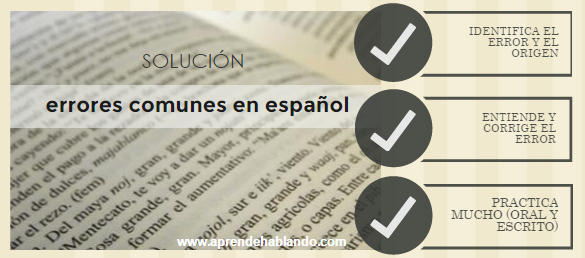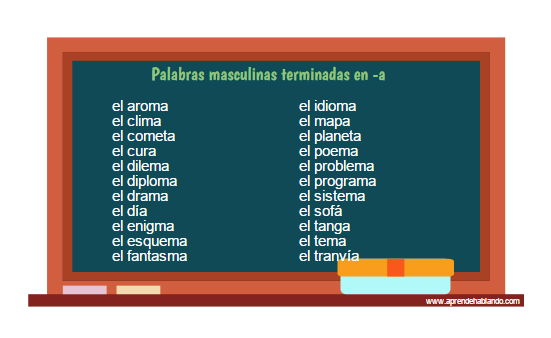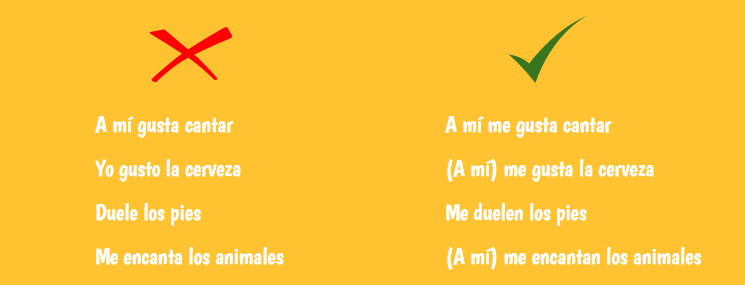Los 12 errores más comunes en español

What are we usually wrong in Spanish?
We have decided to create this post to reflect the most common mistakes in Spanish that foreign students usually have .
It is very possible that you, as a student, make some of the failures that we will indicate. It’s normal, don’t worry. Error is a very important step in your learning. Also, you should not be afraid to make mistakes .
To avoid repeating it is very important, first of all, to identify the error and the origin (possibly it comes from a direct translation of your mother tongue). Subsequently, you should try to correct it and not repeat it . The latter is achieved with practice (written and oral).

⚠️⚠️ Remember: test-error-solution
1) The verbs be and be
In this post we already talk about these two verbs. As a general idea, the use of being refers to the essence of things and has certain functions in Spanish (passive voice, impersonality, etc.).
Instead, being used to communicate resulting states and also has its certain functions (continuous present, idiomatic expressions, etc.). Some common mistakes in Spanish are these:

2) The prepositions
We know that using prepositions correctly is very difficult when we learn a language. We already talked to you in this post that prepositions by and for create great confusion, especially for English-speaking students.
In addition, another common mistake with prepositions in Spanish is to use the preposition < in> with verbs of motion, because the right thing is to use < a> .

3) The gender of nouns
In Spanish the gender of nouns (names) is male or female . Another of the most common mistakes in Spanish is gender confusion. Above all, it is common in masculine words that end in -and feminine words that end in -o.



4) One Other *
This is also one of the most common mistakes in Spanish because we don’t use the indeterminate article before.

5) The agreement between collective noun and verb
If the nouns that refer to a collective (people, group, Real Madrid, everyone, etc.) are in the singular, the verb also remains in the singular.

6) The verb to like and similar
En este post ya te hablamos sobre las particularidades de este verbo y otros similares (molestar, encantar, molar, doler, etc.). Este tipo de verbos debe conjugarse con el pronombre correspondiente. Estarán en plural o singular dependiendo del objeto/persona/acción al que se refiere.

7) Confundir qué y cuál
Este es uno de los errores más comunes en los estudiantes angloparlantes. La traducción más directa de “qué” es what y de “cuál” es which. Pero no siempre es así y entonces aparecen las equivocaciones:

Un buen marco de referencia es utilizar cuál cuando precede al verbo ser. De todas formas, hay algunas excepciones que deben aprenderse con la práctica.

8) Confundir acordarse y recordar
Estos verbos prácticamente significan lo mismo: traer a la memoria. Pero tienen estructuras distintas y el error está en mezclar esas estructuras:
En este post también hablamos más en profundidad sobre ellos.

Recordar es un verbo transitivo, requiere un complemento directo (recordar algo).
Ejemplo: No recordaba el nombre de la calle.
Acordarse es un verbo intransitivo pronominal que no puede usarse sin el se, y suele ir acompañado de la preposición de.
Ejemplo: No me acordaba del nombre de la calle
9) Utilizar solo un pasado simple
En español tenemos dos pasados simples (Imperfecto e Indefinido) y ambos tienen usos diferentes para ofrecer información más precisa. No debes utilizar solo el Imperfecto o el Pretérito perfecto porque su conjugación es más fácil de aprender.

10) Los pronombres posesivos
En español no se utilizan los posesivos con las partes del cuerpo (en inglés sí).

11) Los falsos amigos
Aprender con cognados o “buenos amigos” está genial porque son palabras que ya conoces de tu propia lengua o del inglés. Sin embargo, debes conocer los falsos amigos más comunes y evitar el error para no caer en malentendidos o situaciones embarazosas como estas:

En español, preservativo es sinónimo de condón. Si de lo que queremos hablar es de los componentes químicos que se añaden a la comida, decimos conservantes, no preservativos.
“Embarazado/a” es un falso amigo de embarrassed. Si lo que quieres decir es “I’m embarrassed”, debes utilizar siento/tengo vergüerza, me da vergüerza o me siento avergonzado. Sin embargo, sí se dice “situaciones embarazosas”, como escribimos arriba.
Cada idioma tiene sus propios falsos amigos; te dejamos algunos: inglés, italiano, alemán, portugués, francés, ruso, polaco, griego y japonés.
12) No utilizar el subjuntivo
El subjuntivo es un modo verbal muy utilizado en español. Para hablar correctamente español es necesario que sepas las conjugaciones de sus tiempos y cuándo se usa.

Como ves, estos son algunos de los errores más comunes en español para estudiantes extranjeros. Es posible que puedas tener otros y eso dependerá en gran medida de tu lengua materna.
In addition, these are only errors in grammar and vocabulary. There are also pronunciation errors , but this will be the subject for another post … we don’t want to get tired or bored ?.



